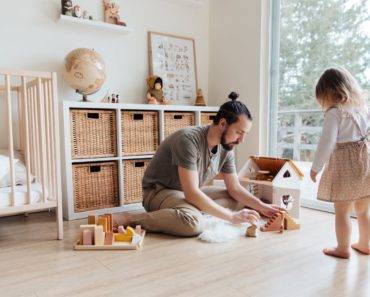Contents
- 1 1. Enhancing Stepparent Relationships through Couples Therapy: Building Harmonious Blended Families
- 2 The Importance of Couples Therapy in Stepparenting
- 2.1 How can couples therapy help stepparents navigate the challenges of blending families?
- 2.2 What are some effective communication strategies that couples can learn in therapy to improve their relationship as stepparents?
- 2.3 How does couples therapy address the unique dynamics and issues that arise in stepfamilies, such as parenting differences and loyalty conflicts?
- 2.4 Related Posts

Welcome to Stepparent Magazine! In this article, we delve into the role of couples therapy for stepfamilies. Discover how this powerful tool can strengthen and support relationships, fostering a healthier and more harmonious blended family dynamic.
1. Enhancing Stepparent Relationships through Couples Therapy: Building Harmonious Blended Families
Title: Enhancing Stepparent Relationships through Couples Therapy: Building Harmonious Blended Families
HTML tags: Enhancing Stepparent Relationships, Couples Therapy, Building Harmonious Blended Families
When it comes to the unique challenges faced by stepparents, couples therapy can play a crucial role in enhancing their relationships. Stepparenting is often accompanied by various complexities, including issues related to identity, boundaries, discipline, and loyalty. Therefore, seeking professional help through couples therapy can provide a supportive and effective approach for building harmonious blended families.
One of the key benefits of couples therapy for stepparents is the opportunity to address and navigate the complexities that arise from merging two separate family systems into one. This process requires open communication, understanding, and empathy, which couples therapy can facilitate. By utilizing effective strategies, such as active listening, conflict resolution techniques, and empathy-building exercises, stepparents can develop stronger bonds with their partners and stepchildren.
Couples therapy also provides a safe space for stepparents to explore and address any personal challenges they may face in their role. It allows them to express their feelings of insecurity, uncertainty, and frustration, which are common experiences for many stepparents. The therapist can guide the couple in understanding these emotions and developing coping strategies to manage them effectively.
Additionally, couples therapy can assist in establishing clear and healthy boundaries within the blended family dynamic. This is essential for building trust, respect, and a sense of security among all family members. Through therapy sessions, stepparents can learn how to establish and reinforce appropriate boundaries that prioritize the well-being of each member while promoting a sense of togetherness.
Furthermore, couples therapy can help stepparents and biological parents work together as a team, fostering a united front when it comes to parenting decisions and discipline. It provides a platform for open discussions and negotiation, allowing both parties to share their perspectives and find common ground. This collaborative approach promotes a positive environment for the children and reduces conflicts between parents, further strengthening the family unit.
In conclusion, couples therapy plays a vital role in enhancing stepparent relationships and building harmonious blended families. By addressing the complex nature of stepparenting and providing strategies to navigate challenges, therapy sessions can help stepparents develop stronger bonds with their partners and stepchildren. Through effective communication, establishing boundaries, and promoting a collaborative approach to parenting, couples therapy creates a supportive environment for the entire blended family to thrive.
The Importance of Couples Therapy in Stepparenting
1. Enhancing Communication and Understanding
In the context of stepparenting, couples therapy plays a crucial role in enhancing communication and understanding between the partners. It provides a safe and neutral space for both individuals to express their thoughts, concerns, and emotions related to stepparenting. Through guided discussions and effective communication techniques, therapy helps couples develop a deeper understanding of each other’s perspectives and challenges, fostering empathy and connection.
2. Navigating Role Ambiguity and Establishing Boundaries
Stepparents often face role ambiguity, where they may struggle to define their exact roles and responsibilities within the family dynamics. Couples therapy can provide valuable support in navigating this ambiguity and establishing clear boundaries. Therapists can guide couples in defining and renegotiating their roles, helping them develop a shared understanding of their respective duties and expectations. This process can reduce conflicts, alleviate stress, and promote a harmonious stepparenting environment.
3. Addressing Blended Family Challenges and Strengthening Relationships
Blended families involve unique challenges such as integrating different parenting styles, managing co-parenting relationships, and addressing potential loyalty conflicts between biological parents and stepparents. Couples therapy offers a dedicated space to explore these challenges and find effective ways to address them. Therapists can provide strategies and tools to enhance communication, manage conflicts, and build stronger relationships within the blended family unit. By addressing these challenges head-on, therapy can contribute to a healthier and more functional stepparenting experience.
Couples therapy can be incredibly beneficial for stepparents as they navigate the challenges of blending families. Here are some ways in which it can help:
1. Effective communication: Couples therapy can provide a safe and neutral space for stepparents to express their concerns, frustrations, and expectations. A therapist can facilitate open and honest communication between partners, helping them develop effective strategies to communicate with each other and their children.
2. Conflict resolution: Blending families often comes with various conflicts, such as differences in parenting styles, discipline methods, and expectations. Couples therapy can teach stepparents how to identify underlying sources of conflict and work towards resolving them in a healthy and constructive manner.
3. Building trust and rapport: Stepparents may struggle with building trust and establishing a strong rapport with their stepchildren. Couples therapy can help stepparents and their partners understand the unique dynamics within the family and provide guidance on how to foster trust and strengthen relationships with stepchildren.
4. Role clarification: Stepparents often face challenges in defining their roles within blended families. Couples therapy can assist in clarifying the roles and responsibilities of each family member, setting realistic expectations, and finding a balance between stepparents and biological parents.
5. Coping with emotions: Blending families can evoke a range of complex emotions for everyone involved. Couples therapy provides a supportive environment for stepparents to explore and process these emotions, helping them develop healthy coping mechanisms and strategies to manage any challenges that arise.
6. Parent-child relationships: Couples therapy can also address any issues related to parent-child relationships within blended families. The therapist can offer guidance on effective parenting strategies, improving communication between stepparents and stepchildren, and fostering positive relationships between all family members.
Overall, couples therapy can provide invaluable support for stepparents, helping them navigate the unique challenges that come with blending families and fostering a harmonious and loving home environment.
What are some effective communication strategies that couples can learn in therapy to improve their relationship as stepparents?
One effective communication strategy that couples can learn in therapy to improve their relationship as stepparents is active listening. This involves truly focusing on what the other person is saying, without interrupting or formulating a response in your mind. It is important to maintain eye contact, provide verbal and non-verbal cues of understanding, and paraphrase or summarize what the other person has said to ensure comprehension.
Another strategy is using “I” statements instead of “you” statements. By expressing your feelings and thoughts using phrases like “I feel” or “I think,” you can avoid blaming or accusing your partner. For example, instead of saying “You never listen to me,” you could say “I feel unheard when I try to express my concerns.”
Setting aside regular time for open and honest communication is crucial. This can be achieved through weekly check-ins or designated conversation times where both partners can discuss any issues, concerns, or updates related to their role as stepparents. Creating a safe space for open dialogue helps build trust and allows for problem-solving.
It is also important to validate each other’s experiences and perspectives. Being a stepparent can bring unique challenges, and acknowledging and validating each other’s feelings can help create a supportive and understanding environment. Using phrases like “I can understand why you feel that way” or “Your perspective is important to me” shows empathy and fosters connection.
Lastly, practicing patience, empathy, and understanding is vital. Stepparenting requires navigating complex dynamics and often requires compromises and adjustments. Taking the time to understand each other’s needs and perspectives can help build a stronger foundation for the relationship.
Overall, effective communication strategies in therapy can help stepparents navigate the complexities of their roles, enhance understanding, and strengthen their relationship.
How does couples therapy address the unique dynamics and issues that arise in stepfamilies, such as parenting differences and loyalty conflicts?
Couples therapy can be incredibly helpful for stepfamilies as it provides a safe and supportive space to address the unique dynamics and issues that arise. One of the primary challenges in stepfamilies is navigating parenting differences. Each parent brings their own style, beliefs, and expectations when it comes to parenting, and these differences can often lead to conflict and tension within the family.
During couples therapy, the therapist can help the couple identify and understand their differing parenting styles. They can explore the underlying reasons behind these differences and work towards finding a middle ground that both parents can agree upon. This may involve establishing clear boundaries, setting consistent rules, and developing effective communication strategies.
Another significant issue that often arises in stepfamilies is loyalty conflicts. Children may feel torn between their biological parent and their stepparent, leading to feelings of guilt, confusion, and divided loyalties. Couples therapy can provide a platform for all family members to express their emotions and concerns openly.
The therapist can facilitate conversations that promote empathy, understanding, and mutual respect. They can help family members build stronger emotional bonds and foster a sense of unity within the stepfamily. Moreover, couples therapy can also assist in addressing any unresolved conflicts or past traumas that may be contributing to loyalty conflicts.
Overall, couples therapy in the context of stepfamilies plays a crucial role in helping couples navigate parenting differences and loyalty conflicts. It provides a structured and supportive environment where families can work together to establish healthy communication patterns, develop effective parenting strategies, and build stronger relationships with one another.
In conclusion, couples therapy can play a crucial role in the dynamic of a stepparent relationship. It offers a supportive and constructive space for partners to navigate the unique challenges that come with blending families. Through effective communication strategies, conflict resolution techniques, and the cultivation of empathy and understanding, couples can work towards building a strong and harmonious union that benefits both themselves and their children. Seeking professional help through therapy is a proactive step towards creating a successful and fulfilling stepfamily life. Remember, with patience, commitment, and the willingness to grow together as a team, stepparents and their partners can overcome obstacles and build a loving and supportive family unit.






